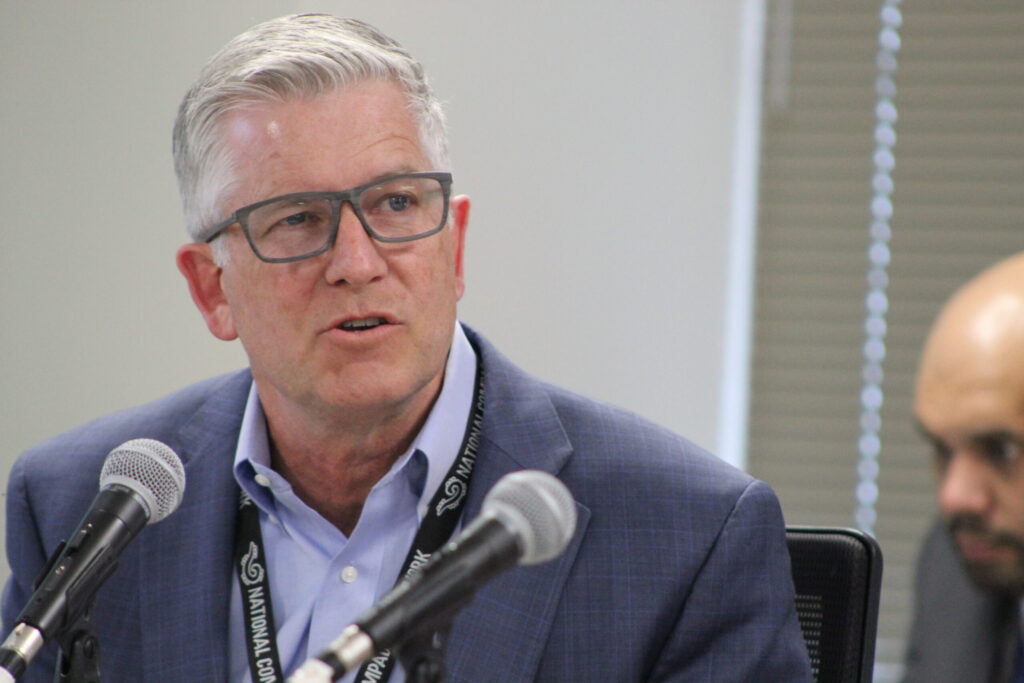Little muck to rake in modern meat packing | GABEL


An industry that began with salted, smoked pork packed into wooden barrels and shipped to the West Indies in exchange for molasses is now a multinational giant that touches the lives of all Americans. Even vegans.
When the Industrial Revolution ushered in growing cities and higher demand for meat, cattle ranches in the western United States and the railroad changed meat packing, which previously had been done by butchers who served their families and close communities. The circle grew exponentially with the railroad which allowed cattle to be driven from the ranch to the rail. Cattle were loaded on the cars and shipped to the packing houses in the east. At that time, the major packers were concentrated in cities like Buffalo, Chicago, Cincinnati and Milwaukee.
Stay up to speed: Sign-up for daily opinion in your inbox Monday-Friday
Even with the advent of the rail making the transport of live cattle more efficient, hot weather still complicated the shipping of boxed beef. According to a white paper available from Kansas State University, the first practical refrigerated rail car to transport fresh meat was designed in 1875. Names still synonymous with meat packing, Gustavus F. Swift and Philip D. Armour, led the charge to make the transport of chilled meat one of the most revolutionary developments to the industry.
The interstate highway system changed meat packing, which previously was located near major corn production in places like Chicago. As their plants aged and became obsolete compared to the burgeoning technologies and efficiencies becoming available, the meat packing moved away from the corn and closer to the cattle. It was, and still is, more efficient to ship boxed beef or even dressed carcasses than livestock.
The fight over meat packing monopolies still rages today but was borne out of a reform movement known as the progressives that fought against unfair practices in companies like U.S. Steel, Standard Oil and Armour. President Teddy Roosevelt, though, was in the White House at the time and was known to favor corporations. One of the progressive journalists at the time was David Phillips who was one of the first investigative journalists, seeking to uncover injustice and the American underbelly. Roosevelt, fed up with Phillips’s articles attacking politicians who served the interests of business over people, called him a man with a muck-rake. The muck raking continued with Upton Sinclair’s fictional work, an ode to socialism, about Chicago’s meat packing industry in “The Jungle.”
Due much in part to Roosevelt’s special commission sent to investigate packinghouse conditions, the Meat Inspection Act of 1906 quickly followed the commission’s report, despite opposition from the packers. Had Sinclair had his stead, of course, the packers would be publicly owned and operated by cities.
Fast forward nearly 125 years, and there is little muck to rake on the floor of modern packing houses, though, like any industry, it faces plenty of criticism from all sides. The part of modern meatpacking that America is getting right, though, is food safety. That’s not to say there’s a lack of debate surrounding whether beef from cattle born, fed and harvested in the U.S. warrant a “Product of the USA” label, and there’s no lack of fist pounding when it comes to the beef that is imported into the country. I could wax poetic about the value added per carcass by exporting cuts that make American consumers turn up their noses but are considered either a sought-after staple or a treat elsewhere. I could also talk about the beef imported into the country to meet demand and how, honestly, they can’t all be rib eyes.
America has the safest, most abundant, most affordable food supply in the world. Period. Meat sold into retail and food service is processed in USDA inspected facilities and a trained USDA inspector looks at every carcass that takes up shackle space. There are hoops to jump through and beef producers support that because we want the beef that gets to your table to be the same high-quality beef that makes it to ours.
Traceability is certainly another topic that has been known to inspire some fist pounding among the cattle-raising community. At the end of the day, if there is a problem, officials can trace it to the source quickly and confidently to remove it from the food supply.
The Processing Revival and Intrastate Meat Exemption Act, or PRIME Act, has bubbled to the surface once again in Congress and the National Cattlemen’s Beef Association and North American Meat Institute have reiterated their opposition. The act would exempt from federal inspection the slaughter of animals and the preparation of carcasses conducted at a custom slaughter facility so long as it is done in accordance with state law. In Colorado, we can sell half or whole beef to a customer and deliver it to a custom slaughter facility (not USDA inspected – think local and small) so long as they process it for a single customer who pays the processing. We can also sell USDA-inspected beef by the cut. I’m confident in the processing we utilize locally in both custom and U.S.-inspected facilities because we have a long-standing relationship with those families who operate the businesses. I’m also confident that less regulation is typically my preference, but I appreciate the confidence USDA inspection lends to beef consumers and I’m not willing to gamble with that and be left holding the proverbial muck rake.
Rachel Gabel writes about agriculture and rural issues. She is assistant editor of The Fence Post Magazine, the region’s preeminent agriculture publication. Gabel is a daughter of the state’s oil and gas industry and a member of one of the state’s 12,000 cattle-raising families, and she has authored children’s books used in hundreds of classrooms to teach students about agriculture.













